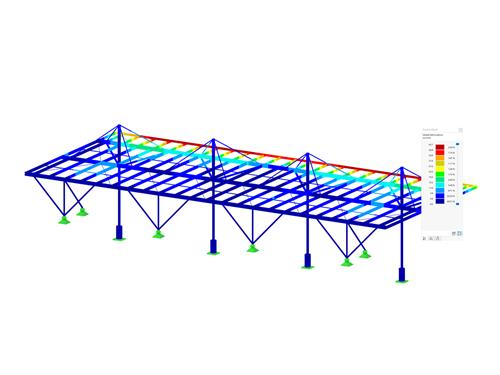The Steel Design add-on allows you to design steel members according to various design standards. Cross-section resistance checks, stability analyses, and serviceability limit state design checks can also be performed. The input and result evaluation are completely integrated in the user interface of the structural FEA software RFEM and the frame & truss analysis software RSTAB.
This manual describes the Steel Design add-on for the RFEM 6 and RSTAB 9 programs.
The Timber Design add-on allows you to design timber members and surfaces according to various design standards. Cross-section resistance checks, stability analyses, and serviceability limit state design checks can also be performed. The input and result evaluation are completely integrated in the user interface of the structural FEA software RFEM and the frame & truss analysis software RSTAB.
This manual describes the Timber Design add-on for the RFEM 6 and RSTAB 9 programs.
The Aluminum Design add-on allows you to design aluminum members according to various design standards. It is possible to perform cross-section resistance checks, stability analyses, and serviceability limit state design checks. The input and result evaluation are completely integrated in the user interface of the structural FEA software RFEM and the frame & truss analysis software RSTAB.
This manual describes the Aluminum Design add-on for the RFEM 6 and RSTAB 9 programs.
Dynamic analyses in RFEM 6 and RSTAB 9 can be performed in several add-ons.
- The Modal Analysis add-on is the basic add-on, performing natural vibration analyses for member, surface, and solid models. It is a prerequisite for all other dynamic add-ons.
- The Response Spectrum Analysis add-on allows you to perform a seismic analysis using the multi-modal response spectrum analysis.
- The Time History Analysis add-on allows for a dynamic structural analysis of external excitations that can be defined as a function of time.
- The Pushover Analysis add-on allows you to determine the maximum nonlinear response of a structure to seismic loads.
- The Harmonic Response Analysis add-on is still under development.
This manual describes the dynamic analysis add-ons for RFEM 6 and RSTAB 9.
This manual describes the topics of the webinar "Stability and Warping Torsion Analyses in RFEM 6 and RSTAB 9".
In the webinar, a stability analysis of a staircase tower is carried out. It explains when and why a warping torsion analysis with 7 degrees of freedom is necessary. Furthermore, special attention is given to how you can create and combine local imperfections in RFEM 6 and RSTAB 9.
In the manual, all steps are carried out in RFEM 6, but the same also applies to RSTAB 9.
Ultimate and serviceability limit state design, fire resistance design, and stability analyses according to Eurocode 3





